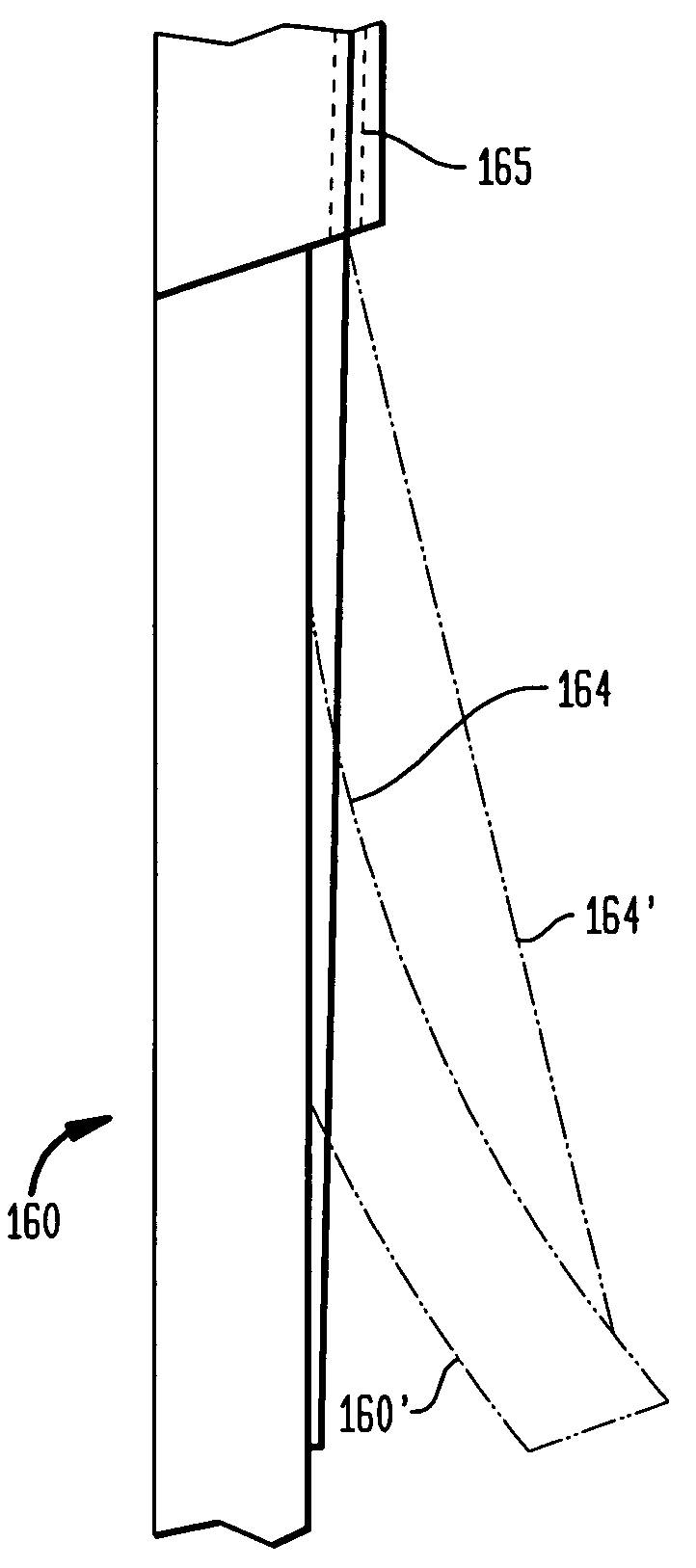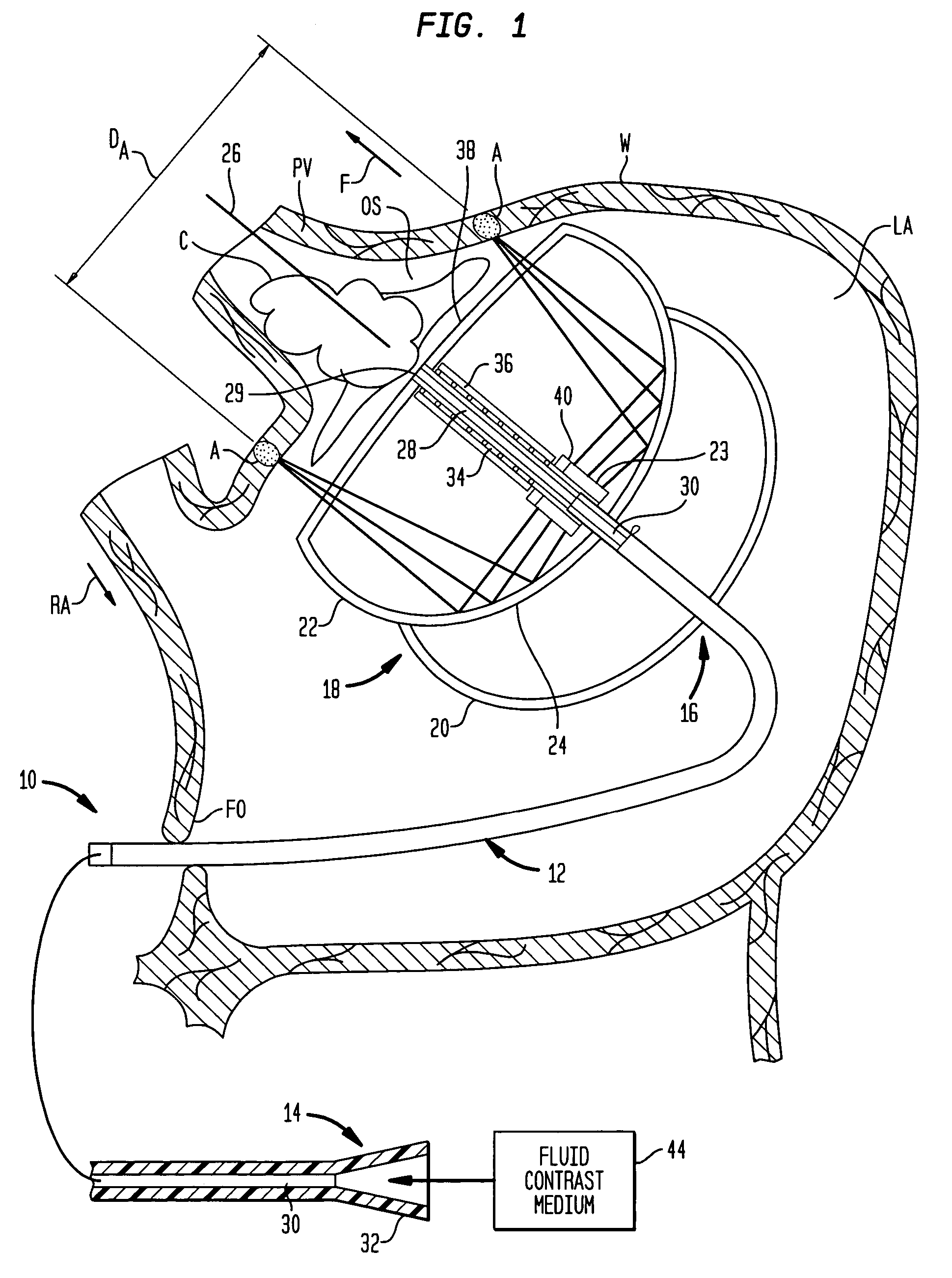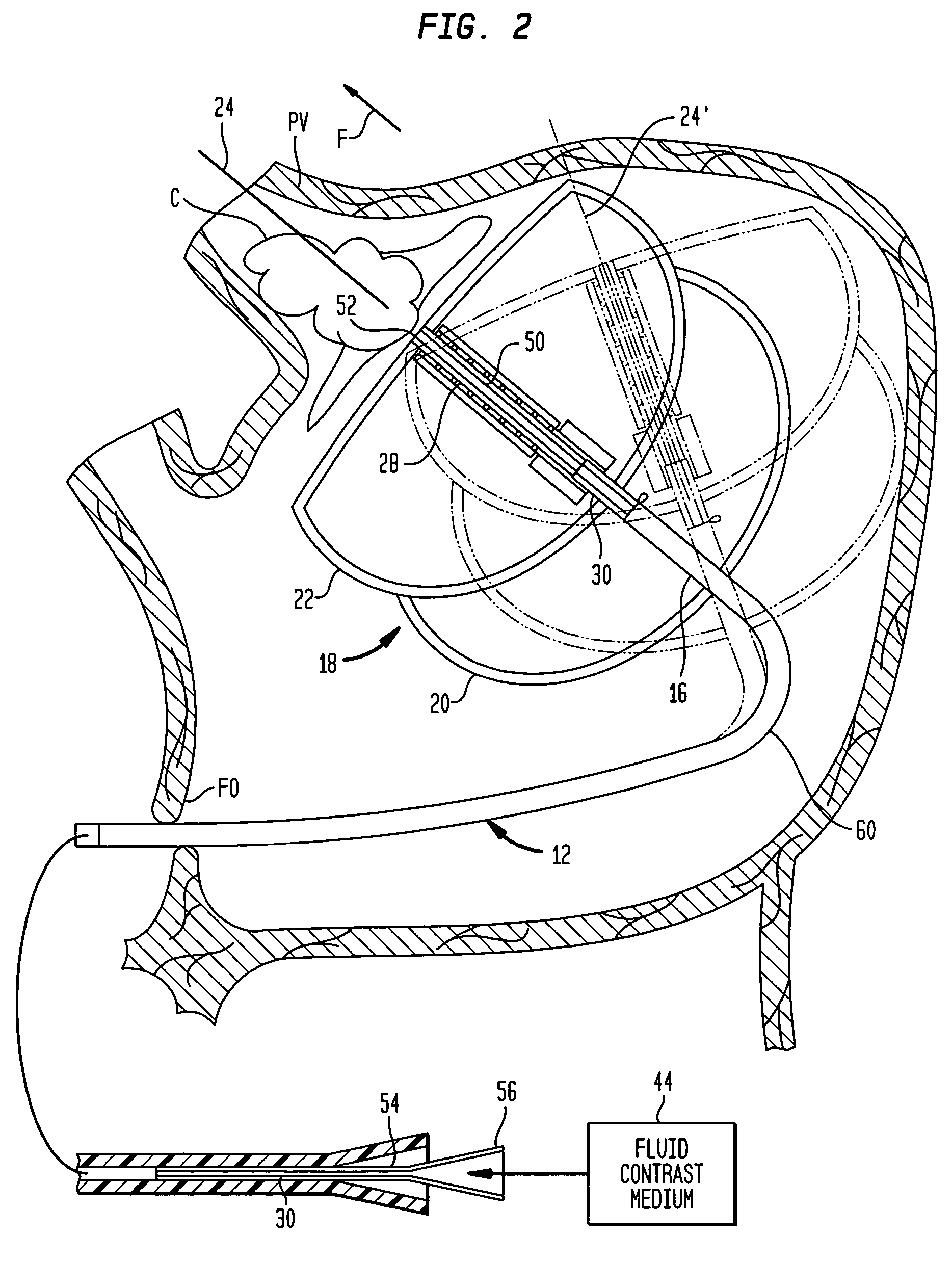[0013]A method according to a related aspect of the invention includes the step of providing an ablation device in a chamber of the heart of a mammalian subject, such that the device is in an operative configuration with a distal side of the device facing toward a region of the
cardiac structure to be ablated, and, while the ablation device is in its operative configuration, injecting a
contrast medium into the chamber on the distal side of the ablation device. The method most desirably further includes obtaining one or more images depicting the
contrast medium in at least a portion of the
cardiac structure as, for example, by x-
ray or
fluoroscopic imaging. Methods according to this aspect of the invention allow the physician to confirm placement of the device while the device is in its operative condition as, for example, while a
balloon or other expansible structure is in its expanded state. Most preferably, the methods according to this aspect of the invention are performed without introducing a separate
catheter to carry the contrast medium, as by using the continuous passageway discussed above in connection with the apparatus. The methods according to this aspect of the invention may further include the step of adjusting the position of the ablation device, based in part or entirely on the relationship between the ablation device and the
cardiac structure observed in the imaging step. These methods allow the physician to position the device during the procedure, without relying on a predetermined mechanical relationship between the device and the cardiac structure.
[0014]Apparatus according to a further embodiment of the invention includes a
catheter and an
ultrasonic device having a forward-to-rearward axis. The
ultrasonic device is arranged to emit ultrasonic
waves so that the emitted ultrasonic
waves are directed into at least a portion of a ring-like region surrounding the forward-to-rearward axis. The ablation device is mounted to the catheter. Apparatus according to this aspect of the invention includes a
steering system adapted to selectively vary the disposition of the ablation device and, in particular, the disposition of the forward-to-rearward axis of the ablation device relative to the heart of the subject, while the ultrasonic ablation device is disposed in a chamber of the heart of the subject. Here again, the ultrasonic ablation device most preferably includes an expansible structure such as a balloon structure having a collapsed, inoperative state and an expanded state. The
steering system preferably is operative to selectively vary the disposition of the ablation device while the expansible structure is in its expanded state as, for example, while a balloon-based expanded structure is in an inflated condition. Most preferably, the
steering system is arranged to selectively vary the disposition of the ultrasonic ablation device independently of engagement between the cardiac structure and any element of the apparatus distal to the ultrasonic ablation device. Most preferably, the catheter has a bendable section located proximally or rearwardly of the forward end of the ablation device, and the steering
system is arranged to selectively bend this bendable section of the catheter under the control of the physician. In a particularly preferred arrangement, the expansible structure includes an internal reinforcing structure having a distal end linked to the expansible structure adjacent the forward end of the expansible structure, and having a proximal end mechanically linked to the expansible structure adjacent the rearward end thereof. The reinforcing structure may include an ultrasonic emitter
assembly, as well as an extensible structure. Preferably, the reinforcing structure becomes relatively flexible when the expansible structure is in a collapsed condition and becomes more rigid when the expansible structure is in its expanded condition. As further discussed below, this arrangement allows the reinforcing structure to maintain the shape of the expansible structure in its expanded or inflated condition, but facilitates threading of the device through the body to the heart.
[0015]The steering
system most desirably includes at least one pull wire mechanically connected to the reinforcing structure, typically adjacent the proximal end thereof. As further discussed below, steering by pulling on the internal reinforcing structure within the expansible structure tends to bend the catheter in such a way that the expansible structure turns about a pivot axis relatively close to the forward end of the expansible structure. This makes it easier to maneuver the expanded structure within the confines of a
heart chamber.
[0017]Desirably, at least one of the dispositions of the ablation device is a so-called “normal” disposition in which the forward-to-rearward axis of the device lies approximately perpendicular to a wall of the heart with at least a major portion of the ring-like ablation region disposed within or in close proximity to the wall of the heart.
Ablation in this disposition forms a
lesion in the form of at least a substantial portion of a loop. Alternatively or additionally, at least one of the dispositions may be a canted disposition in which the forward-to-rearward axis of the device lies at a substantially non-perpendicular angle to the wall of the heart, so that only a minor portion of the ring-like region is disposed within or in close proximity to the wall of the heart.
Ablation in this disposition forms a lesion in the form of only a small portion of a loop, approximating a linear lesion. Thus, the same tool can be used to form both loop-like lesions and substantially linear lesions. Most desirably, the ablation device is arranged to focus the ultrasonic waves into the ring-like ablation region, so that the ultrasonic waves have intensity which increases in the direction of propagation of the energy from the device to the ablation region and decreases in the same direction, beyond the ablation region. Typically, the ultrasonic waves are directed indiscriminately into the entire ablation region. In the normal disposition, all or almost all of this energy performs the desirable function of ablating the loop-like lesion. However, in the canted disposition, only a portion of the ablation region is disposed where ablation is desired. Other portions of the ablation region typically are disposed remote from a
heart wall to be ablated. However, ultrasonic waves directed into those remote portions of the ablation region will pass through the ablation region and will dissipate, typically without damaging other structures.
 Login to View More
Login to View More  Login to View More
Login to View More 


